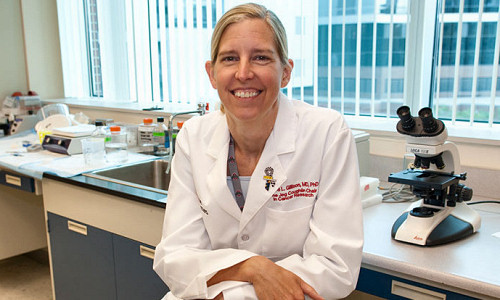The virus that causes cervical, head and neck, anal and other cancers can damage chromosomes and genes where it inserts its DNA into human DNA, according to a new study led by researchers at The Ohio State University Comprehensive Cancer Center — Arthur G. James Cancer Hospital and Richard J. Solove Research Institute (OSUCCC — James).
It’s long been known that cancer-causing types of human papillomavirus (HPV) produce two viral proteins, called E6 and E7, which are essential for the development of cancer. However, they are not sufficient to cause cancer. Additional alterations in host-cell genes are necessary for cancer to develop. Here, scientists identified a new mechanism by which HPV may damage host DNA directly and contribute to cancer development.
Published in the journal Genome Research, this laboratory study used whole-genome sequencing to investigate the relationship between the HPV and host genomes in human cancers.
“Our sequencing data showed in vivid detail that HPV can damage host-cell genes and chromosomes at sites of viral insertion,” says co-senior author David Symer, MD, PhD, assistant professor of molecular virology, immunology and medical genetics at the OSUCCC — James.
“HPV can act like a tornado hitting the genome, disrupting and rearranging nearby host-cell genes,” Symer explains. “This can lead to overexpression of cancer-causing genes in some cases, or it can disrupt protective tumor-suppressor genes in others. Both kinds of damage likely promote the development of cancer.”
“We observed fragments of the host-cell genome to be removed, rearranged or increased in number at sites of HPV insertion into the genome,” says co-senior author Maura Gillison, MD, PhD, professor of medicine, epidemiology and otolaryngology and the Jeg Coughlin Chair of Cancer Research at the OSUCCC — James. “These remarkable changes in host genes were accompanied by increases in the number of HPV copies in the host cell, thereby also increasing the expression of viral E6 and E7, the cancer-promoting genes.”
HPV causes about 610,000 cancers annually worldwide, including virtually all cervical cancers, and many anogenital and head and neck cancers. How it causes cancer isn’t completely understood.
The two cancer-causing proteins, E6 and E7, silence two key tumor-suppressor genes in host cells, contributing to cancer development. “E6 and E7 are critically important for the virus to cause cancer. Our findings shed light on how HPV, and perhaps other viruses, can disrupt the structure of host chromosomes and genes and thereby contribute to cancer development,” Gillison explains.
For this study, Symer, Gillison and their colleagues examined 10 cancer-cell lines and two head and neck tumor samples from patients. Along with whole-genome sequencing, the scientists used several molecular assays, including RNA sequencing, spectral karyotyping (SKY) and fluorescence in situ hybridization (FISH).
Key technical findings included:
The genome-wide analysis, at single nucleotide resolution, identified a striking and recurrent association between HPV integrants and adjacent genomic amplifications, deletions and translocations;
The HPV integrants mapped broadly across the human genome, with no evidence of recurrent integration into particular chromosomal hotspots;
The researchers proposed a “looping” model by which abnormal viral replication results in the extraordinary damage that occurs to host chromosomes at the sites of viral DNA insertion.
“Our study reveals new and interesting information about what happens to HPV in the ‘end game’ in cancers,” Symer says. “Overall, our results shed new light on the potentially critical, catastrophic steps in the progression from initial viral infection to development of an HPV-associated cancer.”
Story Source:
The above story is based on materials provided by Ohio State University Wexner Medical Center.





